Do you love cooking with a wide variety of herbs in your kitchen or use them for homemade remedies? Then you know very well how expensive herbs can be. Before I got into the whole growing and drying herbs, I used to regularly buy small quantities of a variety of fresh ones—or whenever I needed it for a specific recipe. But they always went rancid fast before I used it all up. Sometimes I was able to prolong their freshness by wrapping them in a paper towel. Even the price of tiny bottles of dried organic herbs can run high.
Today I grow and dry most of my own. Because it is not only easy and much more economical, but I also get to enjoy them year round. If you are interested in how I started growing herbs then also read What I’ve Learned from my First Mini Herb Garden in zone 7b.
This time I want to share how to best air-dry fresh herbs whether they come from your garden or are store-bought. It still is the cheapest and most uncomplicated method to produce flavorful dry herbs that last you quite long. So, let’s start and throughout I will provide some of my experiences on how to best maintain their flavors.
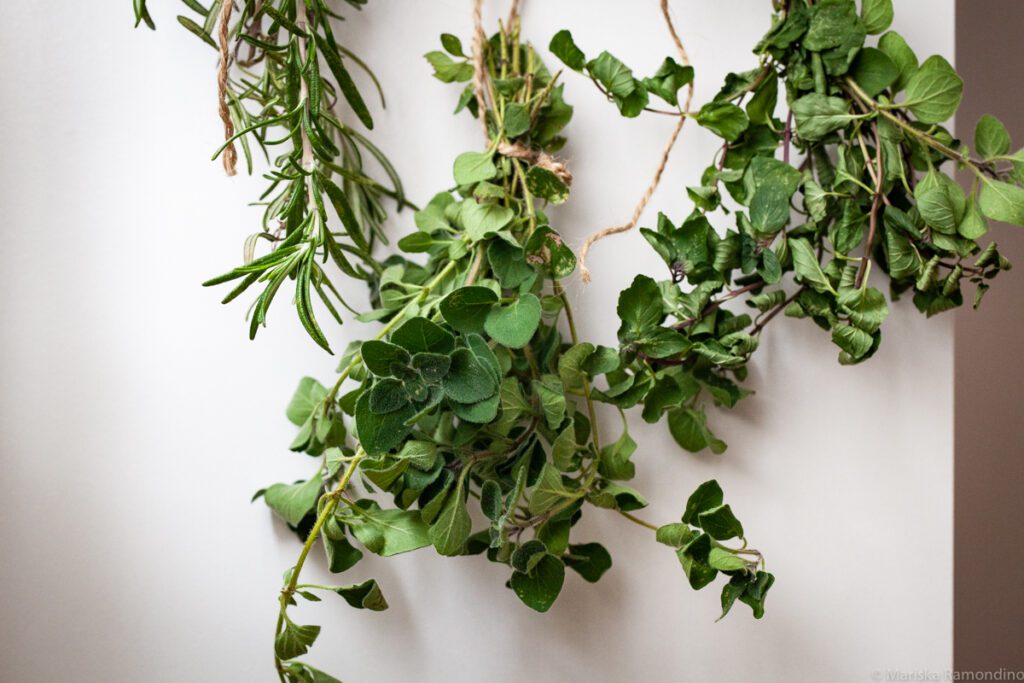
Preserving Herbs
Dried versus Fresh
I love using fresh herbs more often during warmer seasons. Luckily most of them grow well throughout the summer. So I’ll often resort to drying them when I have a sizeable end-of-season harvest. Well, a lot of it also goes to neighbors!
As someone who uses fresh and dried herbs often and interchangeably in my kitchen, I can tell you that the flavors and aroma of dried herbs are always somewhat different than fresh ones as is to be expected.
Dried herbs might lose moisture and some of its characteristics, but whatever flavors remain are much stronger. Because they are packed with a more concentrated taste, don’t expect to use them the same way as fresh ones.
Note: if you are not familiar with using dried herbs in your kitchen, know that a little goes a long way. They are three to four times stronger than fresh herbs. Sometimes people think that their dried herbs have little taste because they add it at the end of a recipe as you usually would with fresh herbs. Instead, add them at the beginning of your cooking (or during) to slowly release their aromas and build up the flavors.
A Basic Drying Process
Air-drying herbs is straightforward, easy and a pretty cheap way to preserve them. It doesn’t require much of your attention either, but the gentler you are with the whole process, the less flavor you will lose. I have noticed that if you keep the shape of the leaves and allow them to air-dry the natural way slowly, you will retain more of their essential oils which means more flavor and better quality.
It is true that herbs like oregano, thyme, rosemary, bay leaves, and sage dry well and reasonably quickly. That is because most of their leaves have a small surface area and less moisture. However, I did also have success with drying herbs that have flat softer leaves and a higher moisture content like basil, mint, and parsley.
A note on parsley: from all the herbs that I have dried, I ‘ve found that parsley retains the least of its beautiful, distinct taste and almost becomes bland. It is excellent to have on hand when you need to garnish your dishes and add some green, but I prefer fresh parsley over dried anytime.
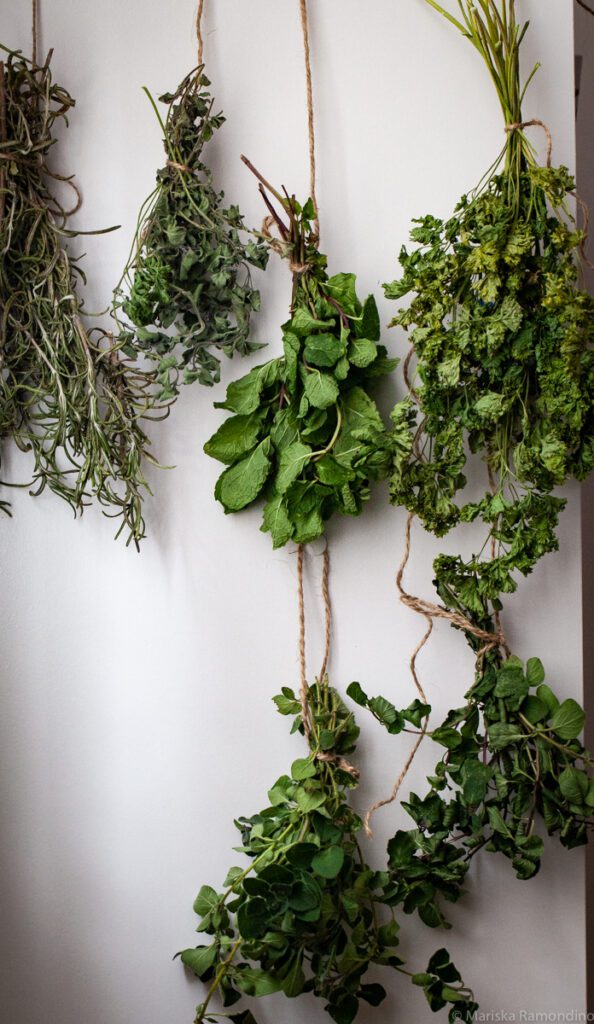
Preparing herbs for drying
If you have fresh store-bought herbs, gently wash and carefully pat dry them first. If you are harvesting your own, here are a couple of tips to lock in their flavors:
- Harvest them before the plant flowers. After doing some research and with some trial and error, I’ve learned that the oil content and taste of plants are better before they have started flowering.
- Try pruning them around mid-morning when the dew has dried but before it becomes too hot. I have tested this a couple of times, and it is true that herbs are more tender and fresh at the beginning of the day and therefore in better condition to prepare them for drying.
- Gently cut away only the best parts of the plant that you plan to dry immediately. You want to use the leaves that are in good shape and can preserve the maximum amount of flavor and oils.
- Shake off any excess dirt or insects outside. Then bring them in and give them a little rinse. But not too much otherwise you can strip them from their natural oils.
- Gently pat-dry them with a clean towel and remove as much moisture as possible. Then spread out on a large serving platter lined with kitchen or paper towels and place in a warm spot but out of any direct sunlight.
You can also use a large baking tray, wooden board or just your kitchen table if you plan to dry a lot at once. It allows the herbs to further dry up after rinsing and before working them in batches (just for about an hour.) It helps if you do this with herbs that have broad leaves such basil or mint. There is less chance that way that they mold.
Note: I have noticed that herbs from your garden preserve more of their flavor once dried than the ones you get from the store.
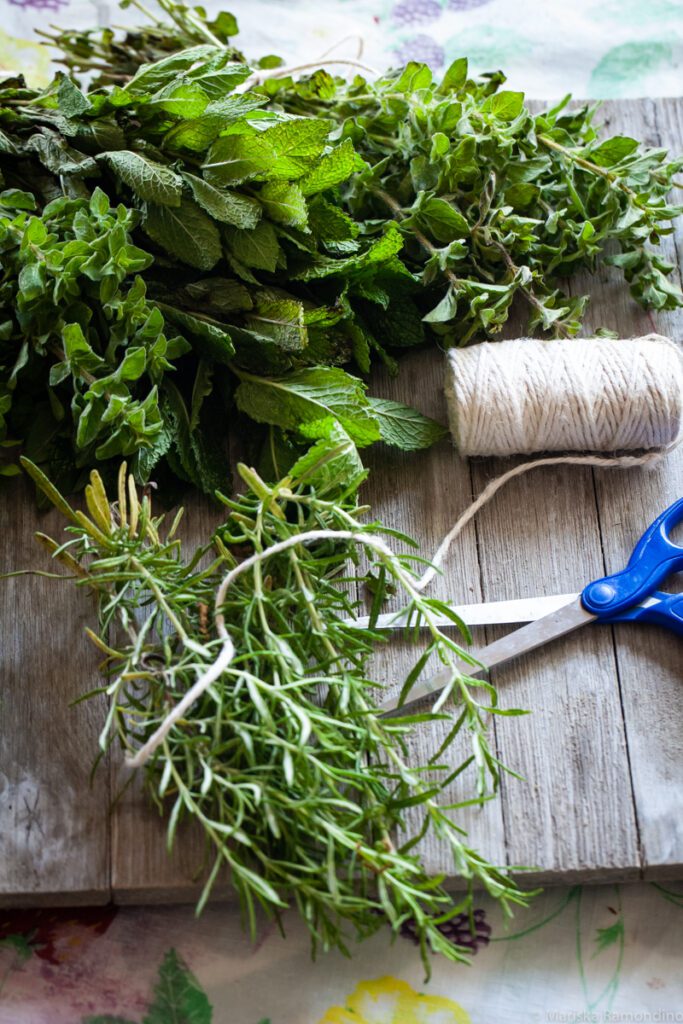
Air-drying herbs
In Bundles
When you air-dry herbs in bundles, it takes about two to three weeks before they are totally dry. But it requires little to no maintenance, it is effortless to store, and it can look beautiful in your kitchen or pantry. Here is what to do:
- Make small bundles and tie their stems together with any twine, string or cotton thread. I avoid making large bouquets of herbs because they are harder to dry and can mold more easily.
- Hang upside down using (painters) tape to attach the string to the wall, a pantry closet, kitchen cabinet. Just make sure that it is in a dry and warm place, but away from sunlight.
- Check from time to time for signs of mold or mildew.
Note: Bouquets of dried herbs also make for a beautiful gift for friends or family!
In a large Basket
An alternative option is to place them on paper towels in a large basket and cover them with paper bags poked with some holes for lots of air circulation. Then place it on top of cupboards in your kitchen to dry there for several weeks. Check regularly and turn them around if needed. It is a more suitable method if you tend to dry smaller amounts of herbs.
Note: this is also how my grandmother would dry old bread for several days before transforming it into bread crumbs.
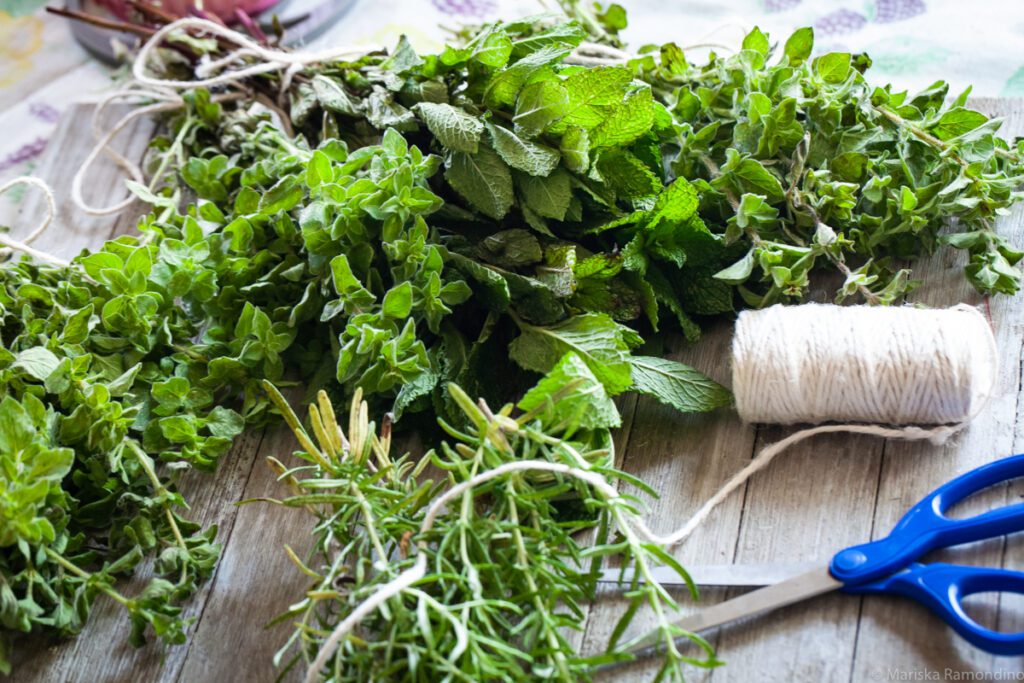
Tips on how to store dried herbs
Once dry, I crumble the herbs with clean fingers, and I discard any thick stems. It is best to store it in small individual airtight containers. I like to reuse empty store-bought dried herb bottles with tightfitting lids. I keep the jars in a cool dark place like a kitchen cabinet, pantry or drawer. It will hold between 6 to 12 months. Of course, the sooner you use them, the more flavor they have.
Because I use a lot of herbs, I often leave the dried cute bundles hanging in my pantry and cut off what I need.
There is something special about opening a jar of dried herbs from your garden or having beautiful aromatic herb bouquets hanging in your pantry! And if dried well and with a little care, their flavors are amazing.
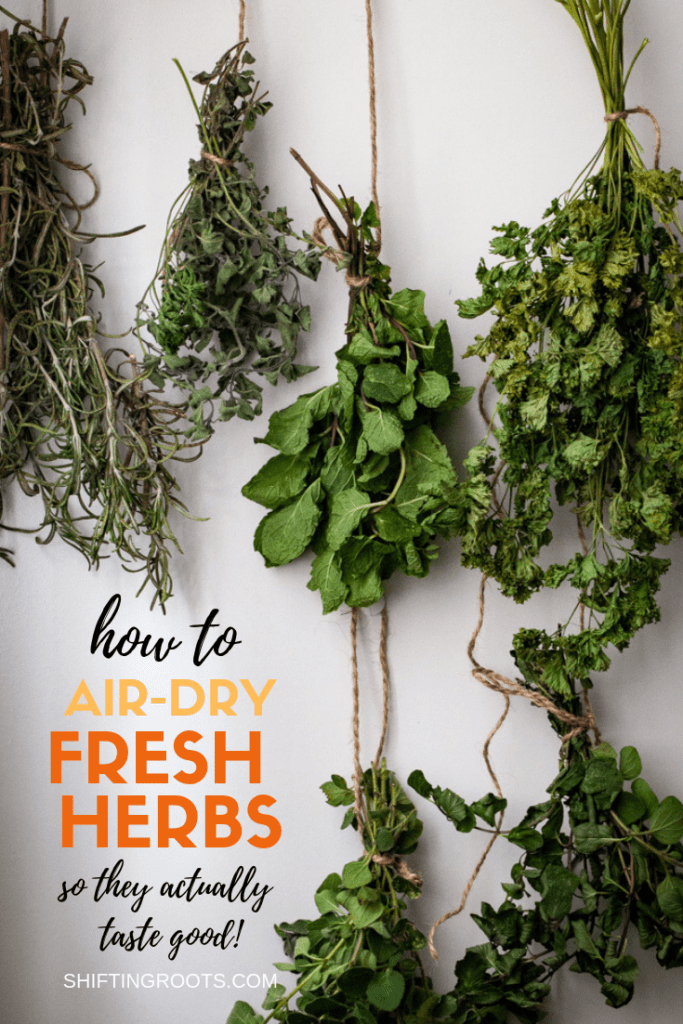
Have you dried herbs at home before and used a different method that works well for you? Please share it with us in the comments and let us in on your secrets!

Linda
Mariska
Mariska